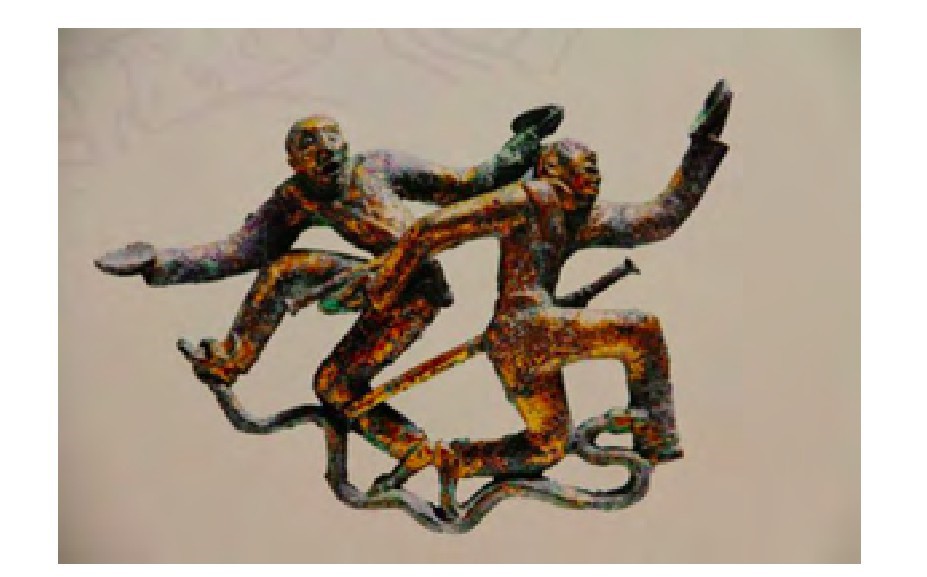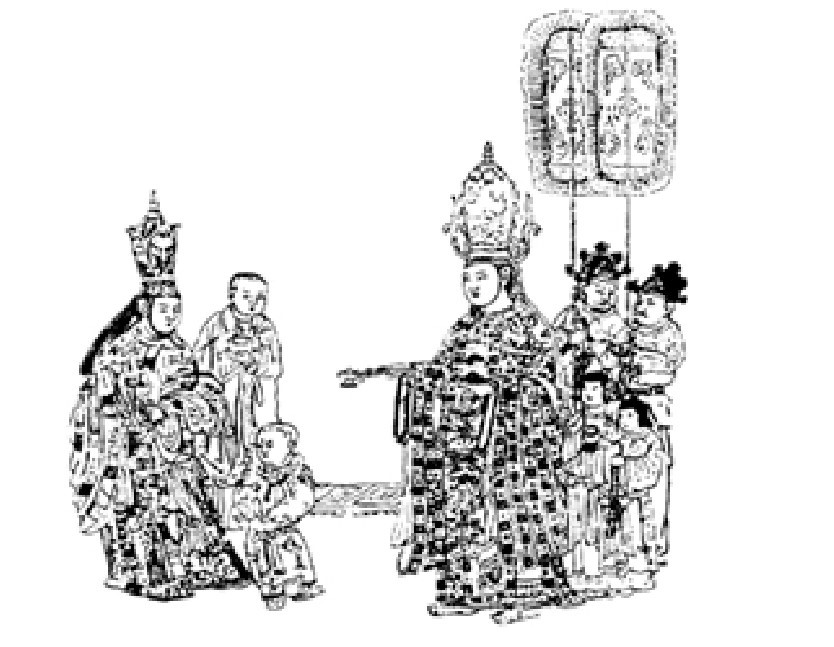Chinese embroidery has multiple cultural heritage values. The first is “work embroidery”, which incorporates human wisdom and skills that change with the environment. The personality or traces of the people are uniforms and mechanical copying cannot be compared; the second is “painting embroidery”. Embroidery is painting, embroidering mother is also a painter. Several famous embroiders in the Han Dynasty mainly inherit or imitate the tradition of literati painting and Western painting. The ethnic minority embroidery is based on the local area, and it is a traditional folk painting tradition in terms of form and composition. The same; once again “embroidered”, that is, to express and convey meaning in embroidery, either as a narrative, or as a symbol, or as a blessing, or as a symbol of ethnic identity, or as a symbol of social stratification. Embroidery is a kind of visual text that uses a needle as pen and thread as ink to “write” culture.
The ancient times of various ethnic groups in China, that is, “good five colors” and “emphasis on writing” has been described in ancient myths and ancient documents. During the Shang and Zhou Dynasties, the “articles” and “embroidery” of clothes were no surprise; stitching and other processes were even more necessary for uniforms. In the “Book of Classics”, “Zhou Li”, “Kao Gong Ji” and other documents, there are records of articles embroidering clothes. After clothing has become a necessity of life and a humane symbol, embroidered clothing is also popular among all ethnic groups. Baiyi “beautiful clothes”, Cuan people “clothes embroidery” and “nobles decorated with beautiful embroidery”, gold-toothed Baiyi males “little embroidered shoes”, women “yiwen beautiful clothes”, non-women women “embroidered shoes” “Cotton brocade”, some “the embroidered shoes and flower sleeves of the embroiderers are refurbished from time to time”, and some “like the embroidery of Su Xiang”, Tibetan men wear “red and green crosses” and women “all Color fishnetis for it. Skirt or Wen fishnet, or colorful cloth fishnet “, the Miao people” use silk to woven text on cloth “yadou” women’s short dress is a bun, embroidered colorful in the chest sleeve “, Yao people” crown red” Towels, embroidered clothes “… Ancient image documents allow people to see the clothes of different characters and characters in different ethnic groups intuitively, and see the fine jewelry or embroidery on the clothes. On bronzes, paintings, and carvings, many figures are dressed with many patterns, and these patterns should be mostly embroidered. They confirmed the clothing characteristics of “The Barbarian King and Qingping Official Dresses and Clothing”, and “Jiang Zijin Zhu” (Figures 1 and 2). Archaeological excavations have also unearthed some exquisite craftsmanship fabrics, such as embroidered coffins unearthed from the Laoshan Han Tomb in Beijing, the mid-Warring States silk embroidering process unearthed from the Chu Tomb No. 1 of JianglingMazhu, Hubei, and the embroidery unearthed from Mashan Chu Tomb in Jingzhou Silk fabrics, etc. Whether it is plain and simple, or gorgeous and delicate; whether it is picking flowers, embellishing, or embroidering, embroidering, emphasizing literacy, and diligent stitching, is the common customs of almost all ethnic groups in China.
Su embroidery, Xiang embroidery, Yue embroidery, and Shu embroidery, which are known as the “Four Famous Embroidery” in China, have long been well-known internationally; Shanghai velvet embroidery and Gu embroidery, Beijing Jing embroidery, Wenzhou Ou embroidery, Ningbo Yong embroidery (gold and silver thread embroidery), Henan Bian embroidery, Hangzhou Hangxiu, Shaanxi Qinxiu, Shanxi Jinxiu, Jiangsu Xixiu (Wuxi fine embroidery), Liaoning Liaoxiu, Jiangxi Xiabu embroidery, Hubei Hanxiu, and Jiangsu, Zhejiang, Guangdong, and other places are famous; ethnic minorities also have many patterns Embroidered colorful brocade, among which Miao embroidery, Yao embroidery, Yi embroidery, Qiang embroidery, Zhuang embroidery, Dong embroidery, Manchu embroidery, Tujia embroidery, and Uygur, Daur, Kirgiz, and another ethnic embroidery, have reached the level of fascinating.
At present, a total of 27 Chinese traditional embroidery arts and crafts properties have been approved by the State Council to enter the national intangible cultural heritage project. They belong to 40 protection units of 14 ethnic groups in 16 provinces, municipalities and autonomous regions.
The multiple cultural heritage values and meanings of Chinese embroidery are at least reflected in the following aspects.

Figure 1 “Two-person pan-dancing gilt bronze ornaments” figure short trousers and trousers are all embroidered. Exhibits of Yunnan Provincial Museum.

Figure 2 Dali Guofan’s long scroll “Zhang Shengwen’s Scroll” Dali Guoli true emperor, empress and waiter costumes
